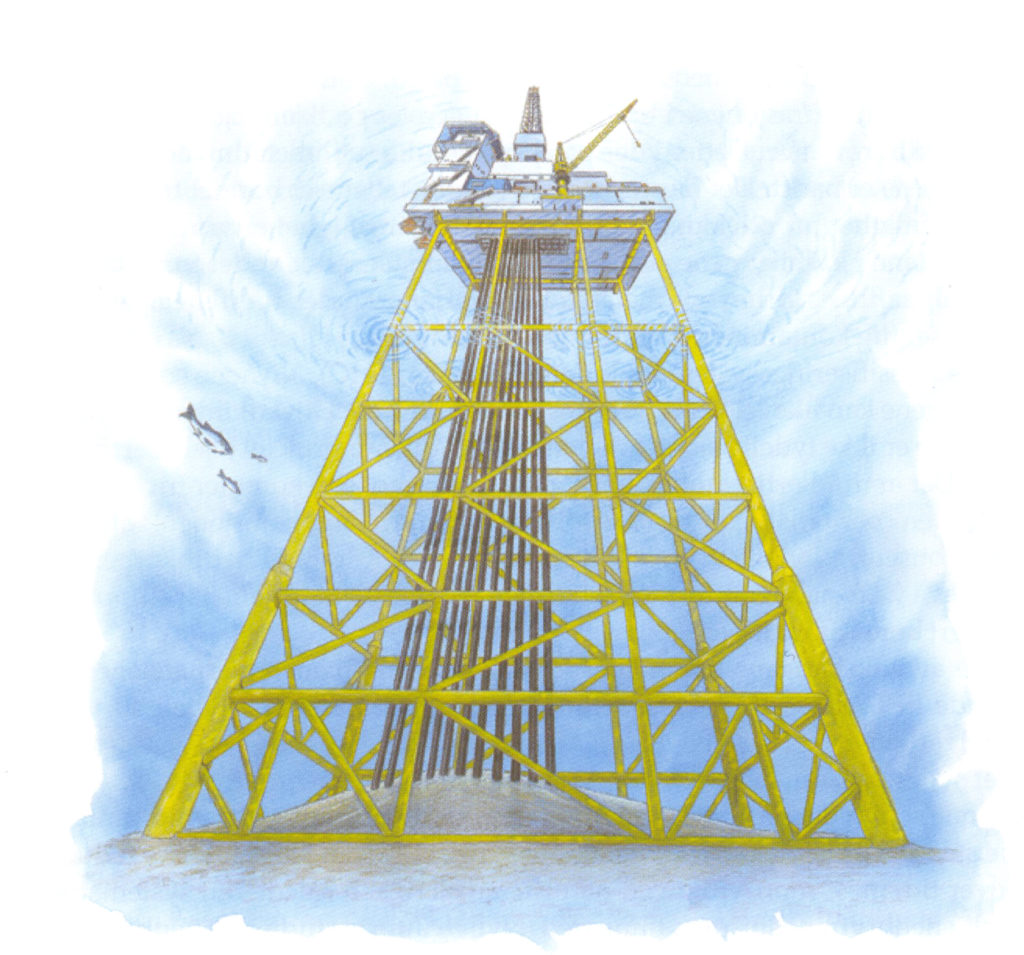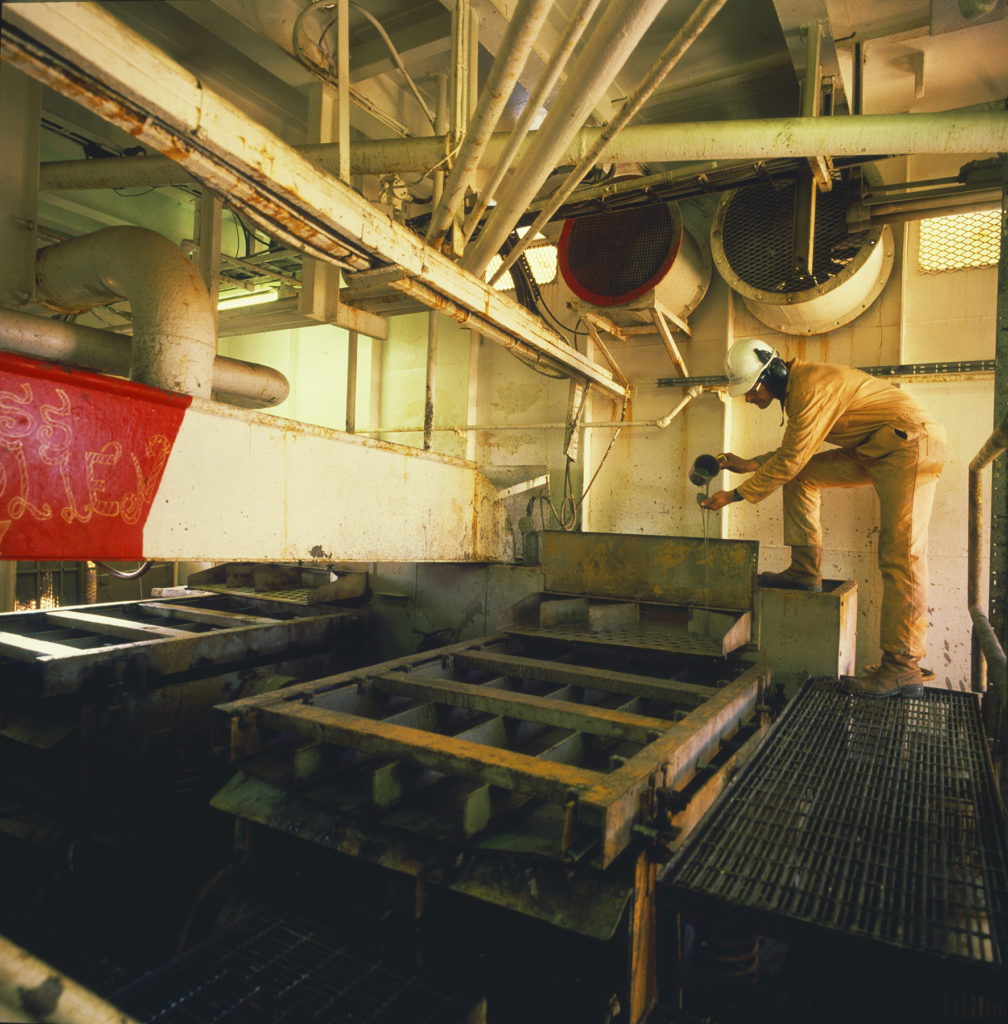Drill cuttings – a major problem

These mounds eventually become part of the marine environment as chemicals in their upper layers are broken down and seabed growth extends over them.
As long as they remain undisturbed, therefore, they constitute no pollution hazard. No overview exists of their numbers on the NCS, nor how many of them might need to be removed.
Discharging treated cuttings offshore was halted in the mid-1990s by tighter restrictions. Instead, they were crushed and injected back below ground or transported to land for disposal.
Petroleum and energy minister Marit Arnstad received the plans for removing 14 steel structures on Ekofisk from Phillips in 1999. One question was the feasibility of clearing the big spoil heaps.[REMOVE]Fotnote: NTB wire service, “Borekakshaugene et uløst problem”, 22 October 1999.
Residues
 Borekaks – et stort problem,
Borekaks – et stort problem,Ekofisk alone is estimated to have some 30 000 tonnes of cuttings on the seabed. These mounds also contain residues of drilling mud with oil- or water-based lubricants.
More than 6 000 wells have been drilled on the NCS, and most are several kilometres deep. Up to 1999, both government and the oil companies agreed that the cuttings were best left untouched.
The problem was that a number of the heaps lay around the platforms, and fears were expressed that removing the latter could make them swirl up and cause local pollution.[REMOVE]Fotnote: Phillips Petroleum Company Norway, Avvikling og disponering av Ekofisk I. Konsekvensutredning, 22 October 1999: 166.
Cuttings in brief
When a bit cuts its way down though the sub-surface to a depth of several thousand metres, the rock chewed out by its action is known as drill cuttings. These residues can vary in size from fine to coarse gravel, and are not in themselves a problem. The difficulty relates to the traces of lubricant/drilling mud which stick to them – even after treatment. Seabed mounds of cuttings contaminated with oil-based mud can contain as much as two per cent residual hydrocarbons. That falls to a few parts per thousand with water-based mud.
Removal
“If the whole platform jacket is to be removed, it’ll be impossible not to disturb the mounds,” said technical adviser Tone Sørgård at the Norwegian Pollution Control Authority (SFT).
Speaking to NTB when the Phillips plans were submitted, she added: “They probably contain polluting chemicals which are currently encapsulated under a lid of sand and gravel.
“During the removal process, marine organisms on the seabed and in the water column will be exposed to these chemicals. Assessing the effects of such exposure … must be part of the decision base for removing the platforms.”
It was therefore uncertain in October 1999 that all 14 platforms on Ekofisk would be completely removed. Getting rid of the cuttings would probably cost NOK 700 million. But leaving them in peace was accepted.
Order
 Borekaks – et stort problem,
Borekaks – et stort problem,Discharging drill cuttings is prohibited under the Oslo-Paris convention (Ospar – see separate article). This has been applied in Norway by a regulation introduced in 1991.
So the cuttings problem relates to old platforms not covered by the later ban. International industry projects were pursued in the late 1990s and early 2000s to clear the spoil away.[REMOVE]Fotnote: UK Offshore Operators Association, UKOOA Drill Cuttings Initiative. Final Report, 2002.
Ospar drew to a great extent on these studies when issuing its recommendation 2006/5, which is based on the hydrocarbon leakage rate and duration of pollution in the area.
This means drill cuttings can be left in place without special measures if annual leakage is less than 10 tonnes or the polluted area does not grow by more than 500 square metres per year.
Another important requirement is that activity associated with final disposal of facilities or infrastructure do not significantly affect any cuttings mounds.[REMOVE]Fotnote: Equinor, Avslutningsplan Statfjord A Konsekvensutredning, August 2018.
